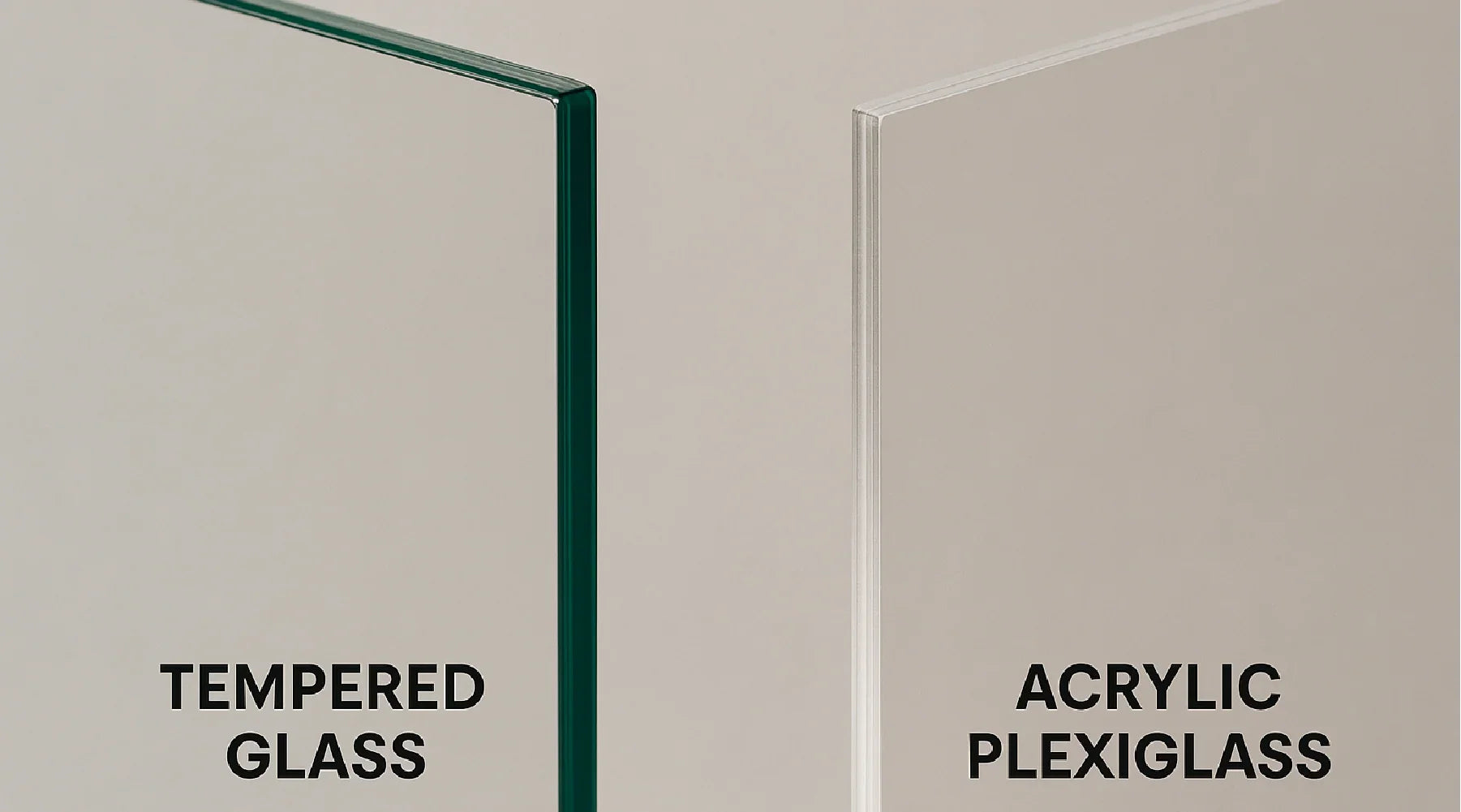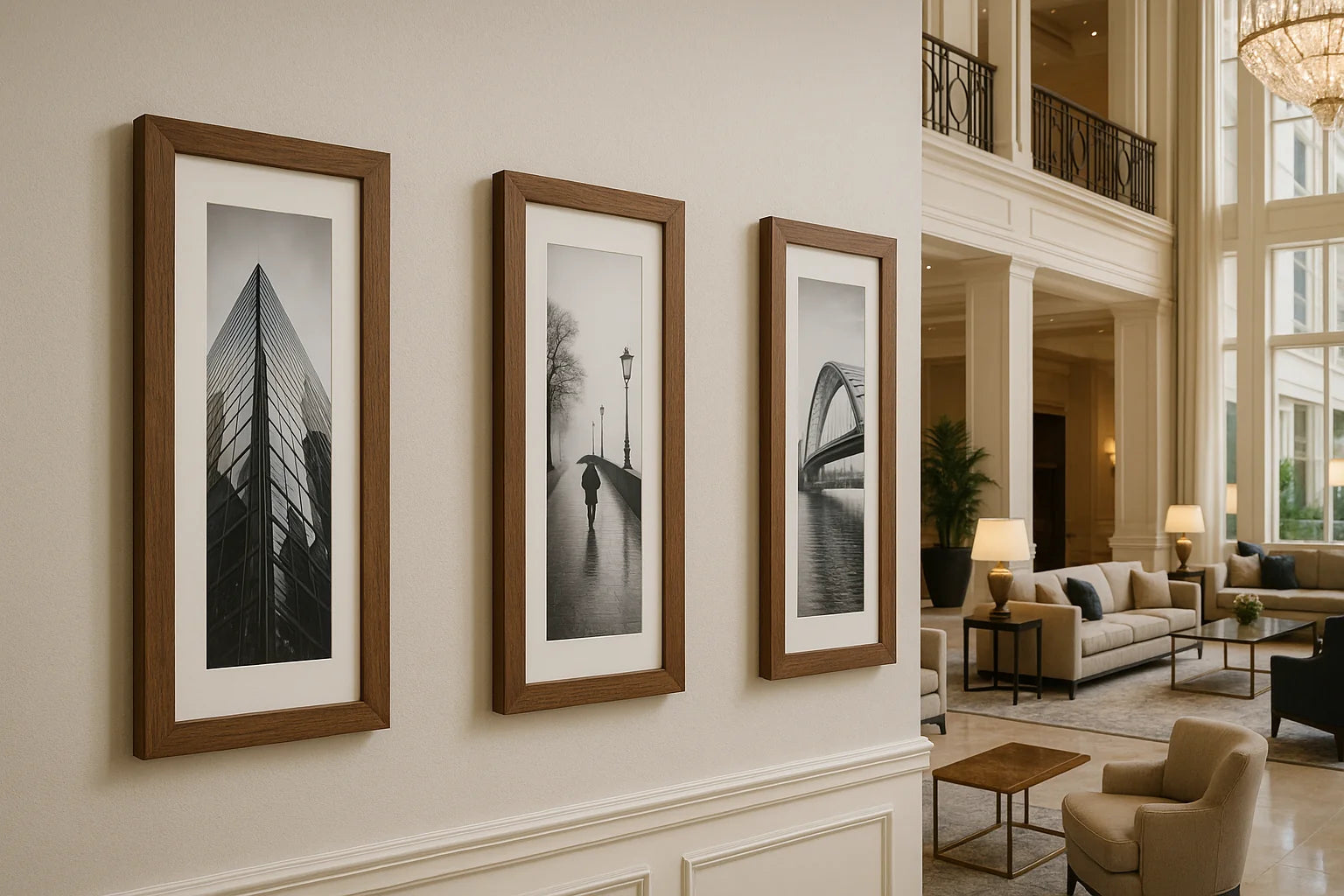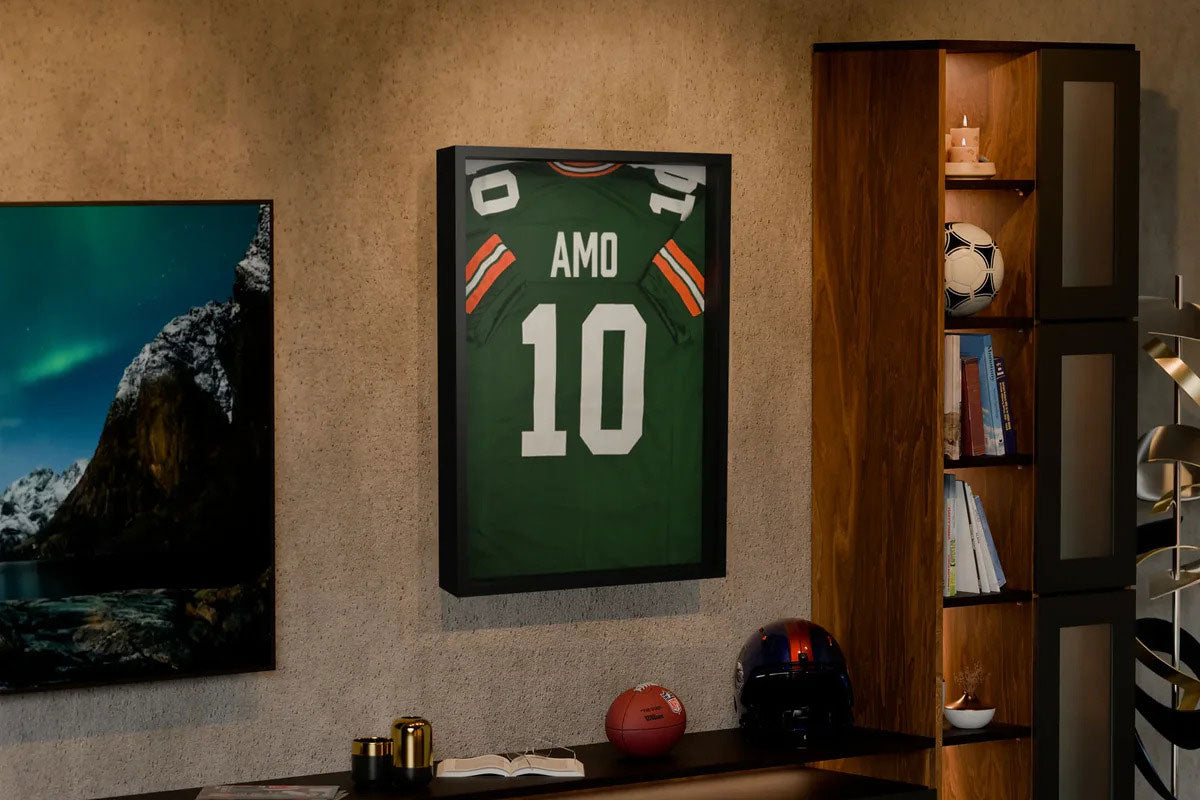When framing your artwork, posters, or photography, one of the key decisions is choosing the right protective cover. Two popular options are tempered glass and acrylic (plexiglass). Each has unique benefits and limitations, and understanding these can help you preserve and display your work effectively.

Benefits and Disadvantages
Tempered Glass
| Benefits | Disadvantages |
|---|---|
| Excellent scratch resistance | Heavy, especially in larger frames. Luckily, our Signature Glass Frames come pre-installed with professional hanging hardware, tested for weight-bearing capacity, to simplify this process as much as possible. |
| Crystal-clear display for professional artwork | Can still break under impact. At Frame Amo, we've rigorously tested our packaging materials to ensure safe transit of all our frames containing glass materials. |
| Safer than standard glass if broken | Typically more expensive |
| Ideal for small to medium frames that will remain stationary | UV Protection can vary by product |
| Professional-grade clarity (e.g., Frame Amo’s Signature Glass Frames) | Not ideal for frequent handling or transport |
Acrylic (Plexiglass)
| Benefits | Disadvantages |
|---|---|
| Lightweight and easy to hang | Can scratch more easily than glass |
| Virtually unbreakable | Attracts dust and static |
| Excellent UV protection (e.g., Studio Series Frame Packs block 95% UV) | Some lower-quality acrylic may yellow over time, though premium options like Frame Amo's plexiglass products resist this |
| Easier to transport and handle | Slightly less crystal-clear than high-quality glass |
| Safe for homes with children or high-traffic areas | Not ideal for ultra-high-end gallery displays |
Key Differences Between Tempered Glass And Plexiglass
Tempered glass is heat-treated for added strength and is often used for high-end framing. Acrylic, also called plexiglass, is a lightweight, shatter-resistant alternative. The table below highlights the main differences and how you can choose between them:
| Feature | Tempered Glass | Acrylic (Plexiglass) |
|---|---|---|
| Weight | Heavier, especially in larger frames | Lightweight and easier to handle |
| Durability | Strong, scratch-resistant | Shatter-resistant but scratches more easily |
| Clarity | Crystal-clear, minimal distortion | Clear, but lower-quality acrylic may yellow over time |
| Safety | Can break more easily | Virtually unbreakable, safe around children |
| UV Protection | Many options available; check specifications | Many provide high UV protection (e.g., Studio Series Frame Packs block 95% UV) |
| Handling & Transport | Heavier and more fragile | Easy to transport, hang, and move |
| Cost | Generally higher | Typically more affordable |
Choosing Between Tempered Glass and Plexiglass
Your choice depends on the specific needs of your display:
-
Use Tempered Glass When: You want maximum scratch resistance, crystal-clear display, or are framing small to medium-sized professional artwork that won’t be moved often.
-
Use Plexiglass When: You need lightweight, shatter-resistant protection, UV protection for sunlight-exposed artwork, or a frame that’s easy to handle, transport, or hang in high-traffic areas.
Plexiglass frames, such as those found in Frame Amo’s Studio Series Frame Packs, illustrate the advantages of this material: lightweight, shatter-resistant, and UV-protective, making them an excellent choice for many applications without sacrificing display quality.
Final Thoughts
Both tempered glass and plexiglass have important benefits and drawbacks. Understanding the differences ensures your artwork stays protected and displayed beautifully for years to come. Whether you prioritize durability and scratch-resistance or lightweight and shatter-resistance, choosing the right cover is key to a lasting, high-quality frame.











